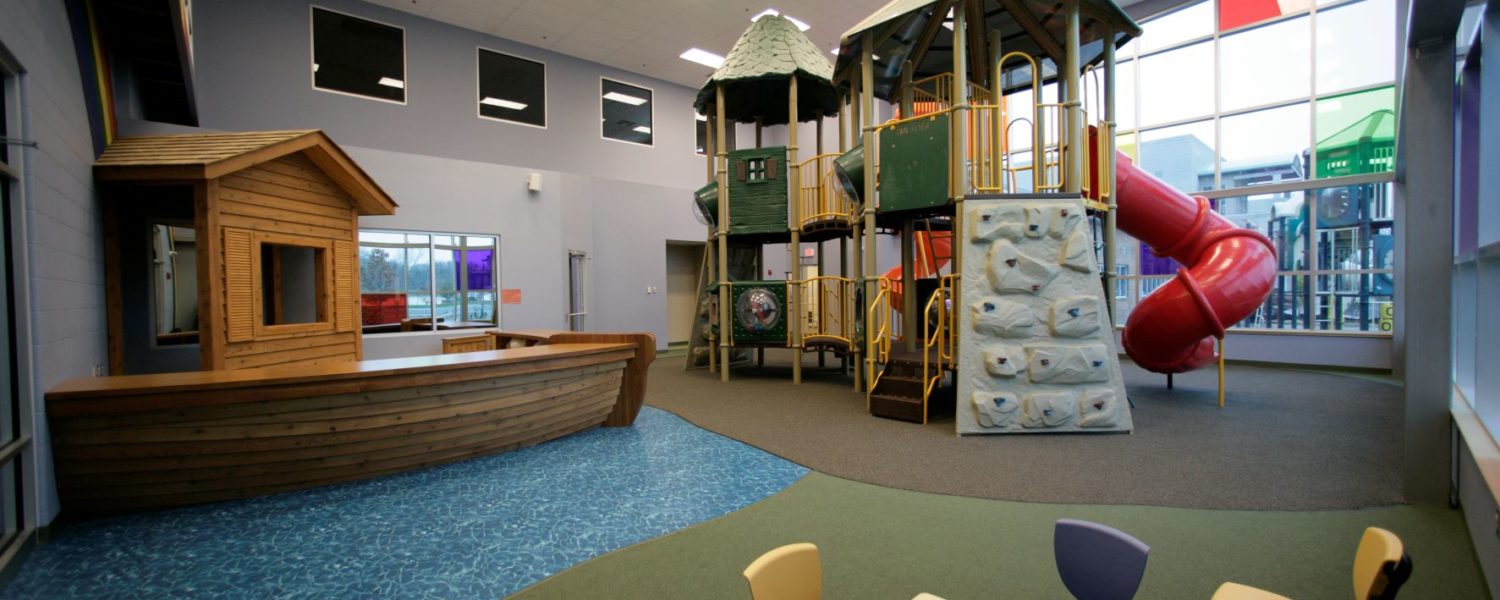Healthy relationships with Christ are formed at an early age. The more ways children enjoy their time at church, the more opportunity they have to learn about God and the stronger that relationship can be. This means special planning is in order to ensure that your church building or renovation project includes effective children’s spaces in its design.
Let’s take a closer look at options and factors you should consider when designing indoor play areas for your church.
Choosing the Right Equipment for Effective Church Children’s Spaces
A well-designed indoor play area is essential. The first question to consider is whether you want the play equipment to be fixed or movable. Movable equipment allows you to easily reconfigure your church children’s spaces to meet multiple needs. It also means you can put the play equipment in storage at certain times. This option is particularly useful with younger children’s play areas, which are smaller and easier to store.
More permanent play areas allow you to install fixed play equipment similar to those found at fast-food restaurant chains. In addition to creating single-use church’s children’s spaces, this fixed equipment will require more maintenance since it needs to be regularly cleaned, inside more than out.
You also should decide how many children will be using each play area at a time, because the space needed and equipment cost can vary greatly, depending on that number.
Thinking Beyond Play
In addition to play equipment, you need to think about a handful of other important elements in your indoor church children’s spaces. First are restrooms, which if included within the play area itself, can keep children safe by eliminating the need for them to go to the foyer or another building.
Next, smaller children will almost always want to join the older ones on the play equipment, but if that happens, there’s a risk that they’ll get hurt by the older children. Installing a half wall prevents toddlers from wandering into danger, while still giving them their own play territory within your indoor church children’s spaces.
Another important element is providing a sitting space for adults while children are using the play area. This allows adults to remain comfortably nearby and discourages the children’s play area from being treated as a daycare, where parents bring their children to play while they leave for a meeting.
Effective Church Children’s Spaces Work for Everyone
Tables and chairs can also be useful if the play area is to be opened to the community for birthday parties or other events. This is a great way to bring people into your church. If you have a specified space adjacent to the indoor play area, like a multi-use Sunday school room, children can open gifts and have cake there, then come into the play area—in any weather—to burn off some of that sugar and excitement.
A great way to attract older children is to install games, such as Nintendo and foosball. A play area that appeals to children of many ages is a good way to keep all children safely in the church.
The Enduring Popularity of Indoor Play Areas in Church Design
Indoor playlands first became a popular addition to many a church design back in the 1990s. Some church leaders thought that this would be a passing fad. However, we are still incorporating a lot of children’s playlands into our church designs.
Certainly families with children love a church that includes a place where kids can run around with each other and have a good laugh. We think this enduring popularity might also be because of the connection between indoor play areas and third place design. When parents know there’s a safe, indoor play area in the community, they are very likely to make use of it, especially in bad weather.
Example of Church Building Trends in Playlands
At Westerville Christian Church in Westerville, Ohio, size doesn’t matter that much. The church gets an unbelievable amount of traffic to its indoor play area—as many as 2,000 came through this space in the first year after it was completed. Part of the reason it’s so popular is that the church rents it out on weekends for children’s birthday parties. This means that families all through the community bring their children to this playland—and come to think of the church as a warm and welcoming place.
Play Areas Can Support Third Place Church Design Vision for Ministry
Birthday parties are not the only reason that children visit indoor play areas. The principle behind third place church design is that people want a third place to hang out besides home and work or school.
Gateway Church of the Nazarene in Oskaloosa, Iowa, has provided that with its indoor playland. The church did it by simply putting the playland next to a café (another church building trend) in its church design. This playland and café are open during the week, so that kids have a place to play while their parents can have coffee and conversation in the adjacent café.
This article is courtesy of McKnight Group, which specializes in the church architecture, design, and construction of multi-ministry buildings that work, www.mcknightgroup.com.




